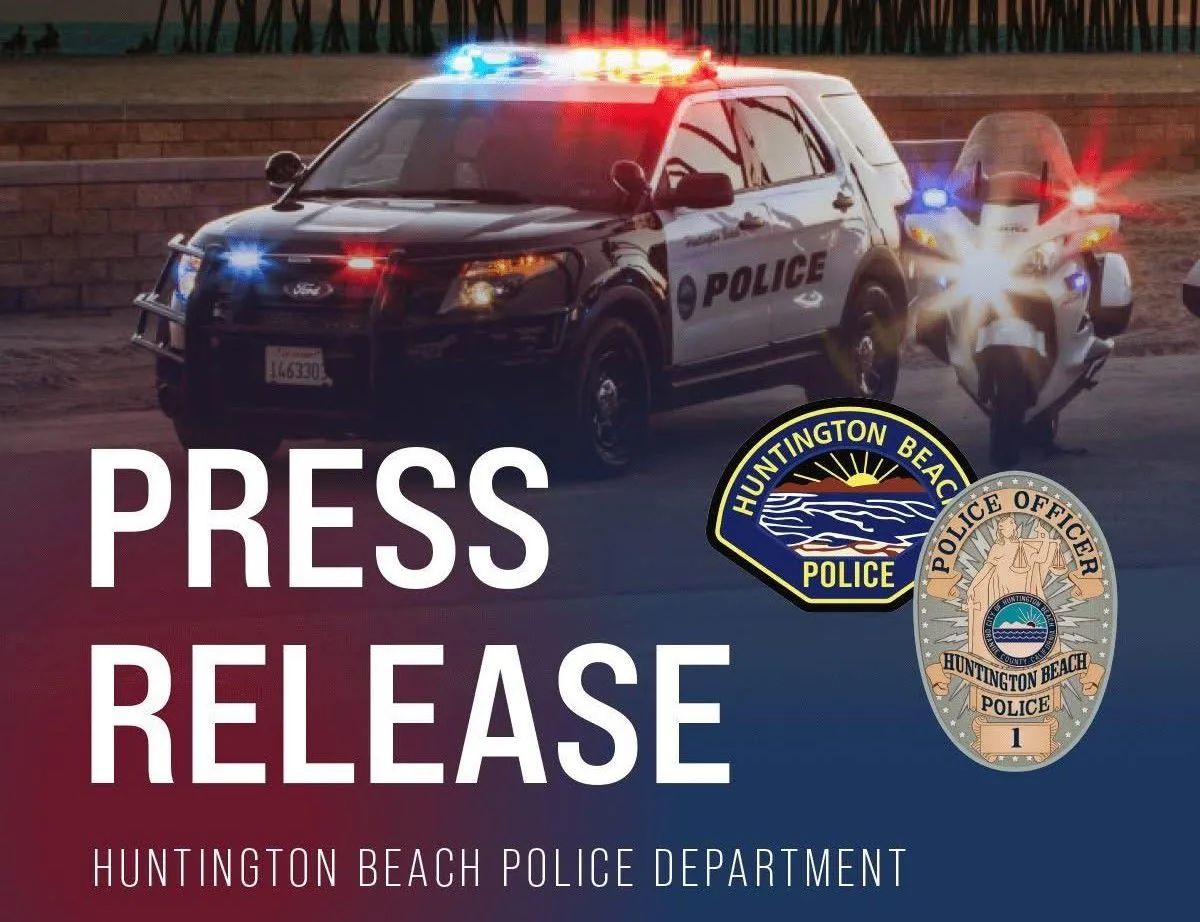On Saturday, October 4, 2025, at approximately 12:50 a.m., police officers responded to a call regarding a vehicle driving recklessly and running red lights in the area of Pacific Coast Highway and Brookhurst Street, according to the the Huntington Beach Police Department.
The officers located the suspect vehicle near Beach Boulevard and Talbert Avenue and attempted an enforcement stop.
The driver failed to yield, and a pursuit ensued. The suspect vehicle continued to the area of Beach and Warner Avenue, where it struck another vehicle. The driver of that vehicle was not injured and refused medical attention.
The suspect vehicle then collided with a pole at a high rate of speed.
Officers and paramedics attempted life-saving measures; however, the driver was pronounced deceased at the scene as a result of their injuries. No officers were injured during the incident.
The California Highway Patrol (CHP) responded to handle the traffic collision investigation. The area of Beach Boulevard and Warner Avenue will remain closed for several hours while the investigation is ongoing.
In the United States, hundreds of people die annually during police pursuits, and a significant portion of those fatalities are drivers being pursued:
- In 2024, there were 692 total fatalities related to police chases. Of those:
- 303 were drivers being pursued by police.
- An additional 59 motorcyclists (also considered drivers) died during pursuits.
- On average, around 300 people die each year in police pursuits, according to broader estimates. This includes drivers, passengers, bystanders, and others.
- From 2017 to 2022, at least 3,336 people were killed in police vehicle pursuits, averaging over 550 deaths per year.
These numbers highlight the significant risks associated with high-speed police chases, not only for suspects but also for innocent bystanders and passengers.
Common alternatives to police vehicle pursuits:
- GPS tracking (StarChase): Police can attach a GPS device to a suspect’s vehicle to track it remotely, avoiding a high-speed chase.
- Remote vehicle disabling: Some technologies allow police to remotely slow down or disable a suspect’s car, though this requires compatible vehicle systems.
- PursuitAlert system: Sends alerts to nearby drivers when a pursuit is happening, helping reduce civilian risk.
- Restrictive pursuit policies: Many departments now limit pursuits to violent felonies, avoiding chases for minor offenses like traffic violations or stolen property.
- Vehicle intercept tactics: Officers may use strategic positioning to block or contain a suspect’s vehicle when it’s safe to do so.
- Unmarked surveillance: Officers follow suspects in unmarked vehicles and wait for a safer time to make an arrest.
- Interagency coordination: Police use radio communication and coordination between departments to track suspects without engaging in a chase.
- Improved officer training: Focuses on risk assessment and decision-making to reduce unnecessary pursuits.

So much for using Grapplers